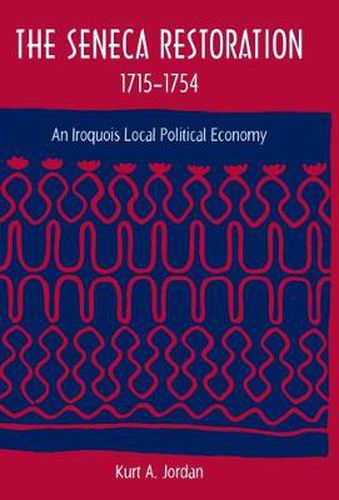Readings Newsletter
Become a Readings Member to make your shopping experience even easier.
Sign in or sign up for free!
You’re not far away from qualifying for FREE standard shipping within Australia
You’ve qualified for FREE standard shipping within Australia
The cart is loading…






The Iroquois nation, one of the most impressive Native American communities encountered by early European settlers, is commonly perceived as having plunged into a steep decline in the late seventeenth century due to colonial encroachment into the Great Lakes region. Kurt Jordan challenges long-standing interpretations that depict the Iroquois as defeated, colonized peoples by demonstrating that an important tribe of that confederacy, the Senecas, maintained an impressive political and economic autonomy and resisted colonialism with a high degree of success.By combining archaeological data grounded in the material culture of the Seneca Townley-Read site with historical documents, Jordan answers larger questions about the Seneca’s sustainability and durability in an era of intense colonial pressures. He offers a detailed reconstruction of daily life in the Seneca community and demonstrates that they were extremely selective about which aspects of European material culture, plant and animal species, and lifeways they allowed into their territory, even as the eastern Mohawk Iroquois populations were truly colonized.
$9.00 standard shipping within Australia
FREE standard shipping within Australia for orders over $100.00
Express & International shipping calculated at checkout
The Iroquois nation, one of the most impressive Native American communities encountered by early European settlers, is commonly perceived as having plunged into a steep decline in the late seventeenth century due to colonial encroachment into the Great Lakes region. Kurt Jordan challenges long-standing interpretations that depict the Iroquois as defeated, colonized peoples by demonstrating that an important tribe of that confederacy, the Senecas, maintained an impressive political and economic autonomy and resisted colonialism with a high degree of success.By combining archaeological data grounded in the material culture of the Seneca Townley-Read site with historical documents, Jordan answers larger questions about the Seneca’s sustainability and durability in an era of intense colonial pressures. He offers a detailed reconstruction of daily life in the Seneca community and demonstrates that they were extremely selective about which aspects of European material culture, plant and animal species, and lifeways they allowed into their territory, even as the eastern Mohawk Iroquois populations were truly colonized.